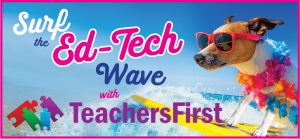As you think about getting this school year off the ground, take a moment to think about the resources you have that reinforce an instructional framework that you use. One framework that I like is Michael Fullan’s Deep Learning or the 6 Cs. With the goal of enabling educated people to be able to solve problems and “deal with life”, these six skills are crucial to education. Research tells us that when technology is used to facilitate Deep Learning (or the 6Cs), the result transforms teaching and learning.
Character Education includes the ideas of building resilience, empathy, confidence, and well being. Rather than making “character ed” another subject to teach, there are several ways that these concepts can be included in everyday processes and procedures in the classroom. One way is to use circles as a classroom routine to build relationships. Another suggestion is that we use the concept of legacy as a catalyst for character discussions. An Edutopia article that I read recently suggests that students write their end-of-year legacy at the beginning of the year to help them with character goals.
Citizenship in this framework involves the notions of global knowledge, cultural respect, and environmental awareness. A teacher could approach this by helping students understand the United Nations Sustainable Development Goals (SDGs). There are many ideas and resources for teaching the SDGs at the TeachSDGs website. I think one of the easiest strategies is to look at the curated book list and integrate a book or two into a lesson where appropriate.
Communication skills defined as “getting students to apply their oral work, listening, writing, and reading in varied contexts” are easy to encourage. Lesson ideas in this area are plentiful including, “Teaching your students to have a conversation” and “Teaching communication skills”. A wonderful tool for students to use to create projects that allow them to practice their communication skills is Microsoft Sway, which is device agnostic and free. If you are not familiar with Sway, take a look at the archive for our Sway Cool Student Projects workshop, in which we shared how to create project ideas that help students practice communicating.
Designing and managing projects which address specific problems and arrive at solutions using appropriate and diverse tools is the essence of Critical-Thinking. This idea is not new to you if you are familiar with design thinking. TeachersFirst has a curated list of tech tools and websites that would be helpful as you plan lessons that include this type of critical-thinking in them.
Collaboration or working in teams so students can learn with/from others is a strategy that most can agree is necessary for our students. One of my favorite tools for quick collaboration is Twiddla (reviewed here). Along with the Google Docs Suite and Microsoft's Office Online, here is a list of additional free tools that can be used to practice collaborative work strategies. Be sure to try the tools out with a friend before you use them with students. Many times you’ll learn tips about the tool that your students might need to know in advance like - you shouldn't “undo” when working collaboratively in a Google Doc as it reverses what was last saved...which could be some other student's work.
Developing qualities like enterprise, leadership, and innovation are part of Creativity and Imagination. One strategy to promote these skills is including maker activities in your instruction. You might also help your students learn about young inventors, as suggested in this blog post.
At TeachersFirst, we offer a series of free services for educator professional learning and development. One of our goals is to give teachers strategies to address the 6Cs and facilitate deep learning. Click here for more information about our free services.
Written by Ruth Okoye. Ruth is the Director of K12 Initiatives at The Source for Learning, the parent company of the TeachersFirst community. Okoye has over 20 years of experience using technology in the classroom and served as the Technology Resource Teacher for Elementary Language Arts in Portsmouth, VA. She is a member of the ISTE Board of Directors and part of the leadership team for the ISTE Edtech Coaches PLN.




